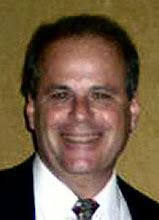As I have thousands of your precious family photographs already on my museum website, I am constantly reminded of the value of the material possessions that help us preserve and recall our own family’s history.
I know that many of us do not “back up” or photos or
documents, as we generally do not anticipate natural (and some unnatural)
events affecting us so severely, a tragedy that may occur to one’s property,
not only from wind and flooding, but from disasters such as fire, earthquakes
(or bombs, G-d forbid).
Many received extensive damage to their homes, especially
their ground floors and basements. One can only try to imagine all that was
lost, and the emotional impact it had on those who suffered because of it. I
come to you here as one who strives to help you preserve your own family
history, who has a vast, genealogical interest in his own family history, with
a wish that you – perhaps as the fulfillment of a resolution for the New Year –
make a full effort in the coming year to preserve and protect your own family
legacy.
Can you imagine having all your precious family photographs,
etc. destroyed, with absolutely no hope of recovering them? Surely we care more
about our own personal well-being and that of our family members, our home
itself, etc., but I am talking here solely about photographs and documents, and
perhaps other material, family “mementos”.
It is my suggestion that each of us find some way of saving our precious photographs in at least a secondary location, e.g. on an external hard drive, thumbnail drive, CD, etc. Or one can save them to one’s computer, put them online to a photo-sharing program, e.g. with Flickr, or on other such websites.
One must remember, however, that only saving one’s photos to
the same relative location is not a good idea, as your precious family photos,
etc. can also be destroyed along with your photo backup, e.g. if your house’s
first floor floods, and that is where you keep your family albums, as well as
your computer who you may back up your files. So perhaps saving your photos
(and documents too, let’s not forget) to an outside location (perhaps in a
different part of the country) is probably the best bet, whether one backs them
up online or in some other physical location.
I could go on, but I think I made my point. Many of us care very much about our family history and the preservation of physical remembrances, etc., so we should make this a priority to back up our precious photos and documents to a safe place. We don’t want to lose valuable family “heirlooms”, nor have to go back and do all our family research over again.
A similar suggestion can also be made with regards to preserving one’s own personal history, either by writing it down or recording it for posterity, before one’s memories fade or worse. Here time is the enemy, not any natural disaster. But that’s for another discussion….






